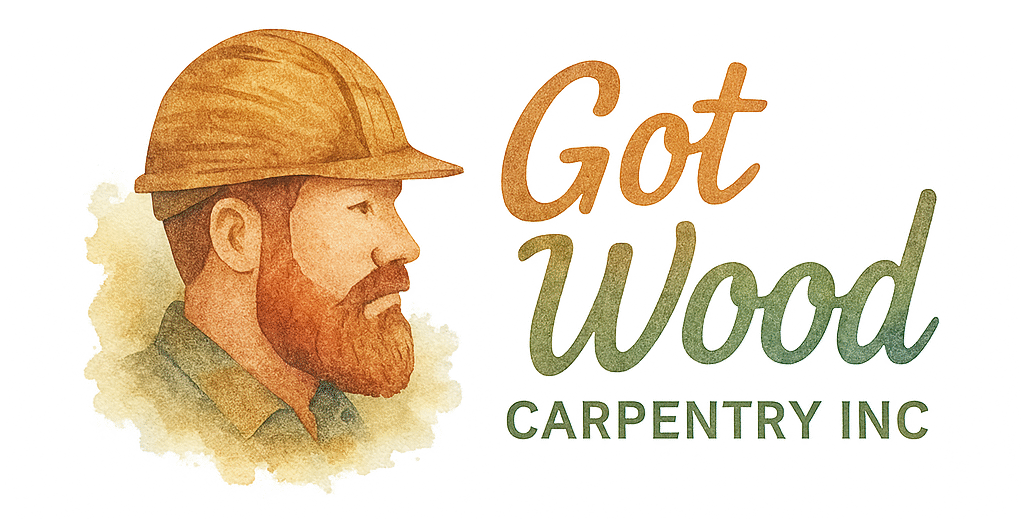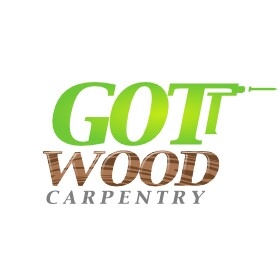Introduction
When it comes to creating a practical and lasting outdoor storage shed, durability is key. Whether you’re storing garden tools, seasonal equipment, or creating a workspace, your shed needs to withstand harsh weather conditions and daily wear and tear. It’s not just about aesthetics; a well-constructed, durable shed is an investment that will serve you for years to come. In this article, we explore six carpentry ideas that ensure the durability of your outdoor storage shed while maintaining functionality and style. For expert carpentry, check out our Residential Carpentry services.
Why Durability Matters in Outdoor Sheds
Outdoor storage sheds are exposed to various elements, including rain, snow, wind, and UV rays. These conditions can quickly deteriorate materials, making it essential to choose the right construction methods and materials. A durable shed protects your belongings, increases property value, and saves you money by reducing the need for repairs. Long-lasting sheds also require less maintenance, so you can focus on enjoying your outdoor space. For more ideas on building your dream shed, browse our Woodworking Tips and Education.
Choosing the Right Materials for Durability
Before diving into specific carpentry ideas, it’s crucial to understand the role of materials in durability. Wood and metal are two common choices for outdoor sheds, and both come with their own advantages. Wood offers a natural aesthetic but requires protection from moisture, insects, and rot. Metal, on the other hand, provides excellent weather resistance and security but may lack the warmth and charm of wood. Combining both materials can result in a shed that is both durable and visually appealing. Learn more about materials by checking out our Decking & Outdoor Structures.
1. Pressure-Treated Lumber for Structure and Foundation
One of the first steps in building a long-lasting outdoor storage shed is to use pressure-treated lumber for the frame and foundation. Pressure-treated wood is infused with preservatives that protect it from rot, insects, and decay, making it ideal for ground contact and outdoor use. For a stable foundation, consider using pressure-treated wood for the base of the shed, as it provides a solid, rot-resistant structure.
You can also use pressure-treated lumber for the structural beams and supports, ensuring that your shed can withstand heavy loads and external forces, such as wind or snowfall. Proper installation of pressure-treated lumber helps maintain the integrity of the shed for years to come. Need help with custom designs? Visit our Custom Furniture page for more inspiration.
2. Metal Roofing for Superior Protection
When choosing roofing materials, metal roofing is one of the best options for durability. Unlike traditional asphalt shingles, metal roofs are highly resistant to wind, rain, and extreme temperatures. Metal roofs are also fire-resistant and require minimal maintenance over time, which makes them a great investment for long-term use.
Additionally, metal roofing can last 50 years or more, depending on the material (galvanized steel, aluminum, or copper), and it offers better protection from moisture, which can be especially important for outdoor storage. You can choose from a variety of colors and styles to match your shed’s overall aesthetic, ensuring it complements your outdoor space. Check out our Commercial Carpentry services for more on high-quality roofing options.

3. Composite Decking for Flooring
Choosing the right flooring material is essential for a durable outdoor shed. Composite decking is an excellent option for flooring as it is resistant to rot, moisture, and insects. Made from a blend of wood fibers and plastic, composite decking is low-maintenance and long-lasting. Unlike traditional wood decking, it doesn’t splinter, fade, or require regular sealing.
Composite decking also resists stains, which is especially useful if you’re storing tools or equipment that may leak oil or chemicals. Its slip-resistant surface makes it a safer choice for high-traffic areas, ensuring you have a stable and durable floor for years of use. Looking for other carpentry ideas? Check out our Decking & Outdoor Structures page.
4. Weatherproof Paint and Sealant Applications
Protecting the exterior of your shed is just as important as the structure. Applying weatherproof paint and sealant to your shed helps prevent water damage, rot, and fading from UV rays. Be sure to choose a high-quality outdoor paint that can withstand extreme weather conditions, such as heavy rains, high winds, and intense sunlight.
Sealants help to create a waterproof barrier around the wood, ensuring that moisture doesn’t seep into the structure and cause decay. For added protection, consider using a stain or sealant with UV inhibitors, which will also help maintain the shed’s appearance over time. Regular touch-ups of paint and sealant are recommended to keep your shed looking great and performing at its best. For more tips on maintaining your shed, visit our Woodworking Errors page.
5. Steel Reinforced Doors and Frames
Security and durability go hand in hand when it comes to the doors of your outdoor shed. Installing steel-reinforced doors and frames offers extra protection against break-ins, harsh weather, and daily wear and tear. Steel is a strong, long-lasting material that resists bending, warping, and damage over time.
Opt for steel-reinforced frames around the doors to provide extra support and prevent sagging or loosening. You can also choose from a variety of steel door options, such as single or double doors, depending on your storage needs. For more information on custom options, visit our Custom Work page.
6. Insulation for Year-Round Use
To extend the usability of your shed throughout the year, consider adding insulation to the walls and roof. Insulation helps maintain a stable internal temperature, protecting your stored items from extreme temperatures. It also provides soundproofing, making your shed a more comfortable workspace or storage area.
Spray foam or rigid foam boards are popular choices for insulation, as they are easy to install and offer excellent thermal resistance. Insulating your shed can also prevent condensation build-up, which can lead to mold and mildew growth. Whether you’re using the shed for gardening tools or as a small workshop, insulation makes it more versatile and functional. For additional carpentry ideas, check out our Classic Homes page for inspiration.
Adding Personalization and Customization
While durability is the priority, your outdoor shed can still reflect your personal style. Adding custom shelves, workstations, or organizational features can maximize the functionality of the space. Custom shelves made from durable materials like pressure-treated wood or metal can help you organize tools, equipment, and other items efficiently.
You can also design your shed to suit your needs by including windows for natural light or installing a small workbench for DIY projects. Adding touches like custom furniture and decorative details can turn your shed into an attractive and functional addition to your backyard. Explore more design options by visiting our Office Design page.
Proper Maintenance to Ensure Longevity
Once your shed is built, it’s important to maintain it regularly to ensure its longevity. Regular inspections are crucial for spotting early signs of wear and tear, such as loose nails, rust, or water damage. Simple maintenance tasks like repainting, re-sealing, and checking the roof for damage will help your shed last longer.
Additionally, keep the area around the shed free of debris and leaves to prevent moisture buildup and pests. If you live in an area with extreme weather conditions, it’s a good idea to periodically reinforce the structure of your shed to withstand high winds or heavy snowfall. For more tips, visit our Backyard Ideas page.
Conclusion
Building a durable outdoor storage shed is about more than just protecting your belongings—it’s an investment in your property and a way to enhance your outdoor space. By incorporating these six carpentry ideas—pressure-treated lumber, metal roofing, composite decking, weatherproof paint, steel doors, and insulation—you can ensure your shed is built to last.
Not only will these ideas increase the longevity of your shed, but they’ll also make it a more functional and aesthetically pleasing addition to your home. With proper maintenance and care, your outdoor storage shed will continue to serve you for years to come. Want to explore more? Check out our Residential Carpentry services for your next project!
FAQs
How do I prevent moisture damage in my outdoor shed?
Moisture damage can be prevented by using pressure-treated lumber, sealing the exterior with weatherproof paint, and ensuring proper ventilation inside the shed. Regular maintenance is also key to identifying potential issues early.
What is the best type of wood for outdoor storage sheds?
Pressure-treated wood is the best choice for outdoor sheds as it is resistant to rot, insects, and decay. Cedar and redwood are also good alternatives for durability.
Can I build an insulated shed for year-round storage?
Yes, adding insulation to your shed’s walls and roof will help keep the temperature stable year-round, making it suitable for all types of storage.
How often should I maintain my outdoor storage shed?
It’s recommended to inspect your shed at least once a year, especially after harsh weather. Reapply sealants and paint as needed, and check for any structural issues or pest damage.


